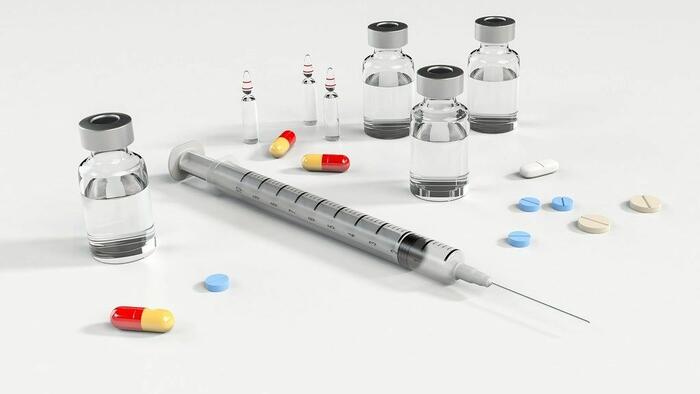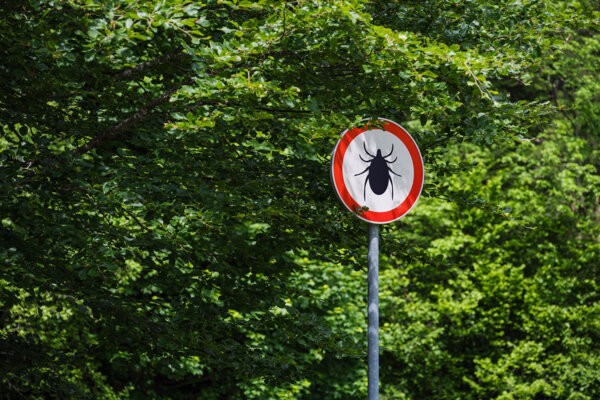Authored by Lawrence Wilson via The Epoch Times (emphasis ours),
Pharmaceutical companies can continue to charge the federal government—and Medicare beneficiaries—full price for a handful of drugs that might have seen price reductions as soon as next year.
That’s because Congress changed the law to outright exempt or delay consideration of more than 300 medications for the Medicare Drug Price Negotiation Program.
That includes 17 of the top 50 products on Medicare’s drug spending list.
Here’s what lawmakers did, why they did it, and how it affects federal and consumer costs.
Medicare Now Negotiates Some Drug Prices
The federal government, the world’s largest purchaser of prescription drugs, has been legally authorized to negotiate prescription drug prices since 2022.
To be considered for price negotiation, a drug must have been on the market for at least nine years, or 13 years for biologic drugs, those derived from biological material rather than chemicals.
While the program is intended to arrive at a “maximum fair price” for medications, the pharmaceutical industry considers it a form of government price setting rather than negotiation.
“This system ignores the nature of the research and development (R&D) process, discouraging continued R&D after a medicine is FDA approved and deeming some types of medicines as not worth the real-life impact they can have on patients,” trade association Pharmaceutical Research and Manufacturers of America states on its website.
To date, no prices have been reduced by the negotiation program. The first round of negotiated prices won’t take effect until January 2026. This covers 10 of the more than 8,800 medications covered by Medicare and applies to Medicare Part D only.
Orphan Drugs Were Always Exempt From Negotiation
Orphan drugs are those used to treat a so-called orphan disease, a rare condition affecting a relatively small number of people.
Finding a cure for these diseases can be expensive and risky. The cost of bringing a new drug to market can range up to $2 billion, according to data cited by the Congressional Budget Office.
To encourage drug makers to keep looking for treatments for rare diseases, Congress exempted orphan drugs from Medicare price negotiations.
Any drug that treats just one disease affecting fewer than 200,000 people is not eligible for price negotiations, regardless of how much it costs or how long it’s been on the market.
Some of these orphan drugs are quite expensive. For example, Medicare Part D covered Ravicti, a drug for treating urea cycle disorder, for just 87 people in 2023 at a cost of more than $840,000 each.
Without the ability to recoup the high cost of developing such drugs, pharmaceutical companies say it would be impossible to invest in finding cures for rare diseases.
“Rare disease drug development is uniquely challenging, and a one-size-fits-all approach to policy can stymie innovation for the 30 million Americans living with a rare disease,” Stacey Frisk, executive director of the Rare Disease Company Coalition, said in a May statement.
The Big Bill Changed the Rules
The One Big Beautiful Bill Act tweaked the rules of the Medicare Drug Price Negotiation Program to allow more drugs either to qualify as orphan cures or to keep that designation after being approved to treat more common ailments.
Rep. John Joyce (R-Pa.), a physician, sponsored that part of the legislation, which was originally introduced as the ORPHAN Cures Act.
“The ORPHAN Cures Act ensures that proven, critical [research and development] incentives are in place so the millions of Americans with rare diseases can continue to have hope for the future,” Joyce said in a statement introducing the legislation.
First, the law widened the definition of an orphan drug to include those that treat more than rare diseases but do not treat non-rare conditions.
That excludes an additional group of 82 drugs from price negotiation.
Second, the law delayed the date at which orphan drugs that were later approved to treat more common diseases can be considered for price negotiations. That provision covers another 233 medications.
Normally, a drug must have been on the market for at least nine years, or 13 years for biologic drugs, to be considered for price negotiations. That provision was calculated to allow drug makers adequate time to recoup their investment.
Now, drugs that began as orphan drugs but were later approved to treat more common illnesses will get more time to market the drug to Medicare at full price.
For these drugs, that nine- or 13-year waiting period is keyed to the date the drug received approval for a more common disease, not the date it first entered the market.
That generally adds a year or more before the drug would be eligible for Medicare price negotiations.
“That’s an example of a good policy change, where innovation is being rewarded and not penalized,” AbbVie board chair and CEO Robert A. Michael told investors on a July 31 earnings call. A spokesperson for AbbVie declined further comment.
In 2024, the pharmaceutical industry spent more than $150 million to influence federal and state legislatures, according to watchdog group Open Secrets. Of the more than 700 pharmaceutical lobbyists, nearly two-thirds were former government employees.
These Drugs Will Remain Costly Despite Wider Use
These carveouts exempt an additional 82 drugs from Medicare price negotiations and potentially delay negotiations on 233 others, according to consulting firm Health Management.
These drugs comprise just 3.6 percent of Medicare-covered medications but accounted for 24 percent of the more than $211 billion in Medicare drug spending for 2022.
Darzalex, produced by Johnson & Johnson, was approved by the Food and Drug Administration in 2015 for patients who had previously been treated for multiple myeloma.
Since then, Darzalex has received eight more approvals for treating multiple myeloma in other circumstances. Medicare and Medicaid together paid more than $10 billion for the drug from 2019 to 2023.
Blood cancer drug Venclexta, marketed by AbbVie, is also excluded from price negotiations. The federal government alone paid more than $3 billion for the medication over five years.
The cancer drug Keytruda, produced by Merck, entered the market in 2014 for the treatment of melanoma and has now received 40 approvals covering a variety of other cancers.
The federal government paid nearly $24 billion for Keytruda from 2019 to 2023.
Opdivo, made by Johnson & Johnson, and Yervoy from Bristol-Myers Squibb would have been eligible for Medicare price negotiation in 2026, but will now be delayed.
The federal government has already purchased more than $10 billion worth of Opdivo and $3 million of Yervoy.
The orphan drug provisions in the One Big Beautiful Bill Act will cost taxpayers $1.8 billion through 2034, according to a report commissioned by Alexion Pharmaceuticals, a subsidiary of AstraZeneca.
The Congressional Budget Office estimated the cost at nearly $5 billion over 10 years.
Some Call That a ‘Handout’ to Big Pharma
President Donald Trump has asked drug makers to voluntarily reduce prices not just for Medicare but for Medicaid as well, or face “aggressive action” by his administration.
The president said on July 31 that his Most Favored Nation Prescription Drug Pricing plan, first announced in May, was met with blame shifting and requests for policy changes that would amount to billions of dollars in “handouts” to the industry.
Some patient advocates say the pharmaceutical industry has already received generous incentives from the federal government.
“The 42-year-old Orphan Drug Act already provides generous incentives such as tax credits and priority review vouchers, and those remain fully intact under the Medicare Negotiation Program,” Alyson Bancroft of Patients for Affordable Drugs told The Epoch Times by email.
A July study by researchers from Bentley University indicated that drug makers’ spending on research and development increased by $30 billion in the year and a half after the Medicare Drug Price Negotiation Program was approved as a part of the Inflation Reduction Act of 2022, rising to $247 billion over that 18-month period.
The development of biologics has more than tripled over the last decade. The Food and Drug Administration (FDA) approved 17 of them in 2023, up from an average of 4 per year before 2014.
The Epoch Times requested comments from Bristol-Myers Squibb, Johnson & Johnson, and Merck, and received no response by the time of publication.
Loading recommendations…











